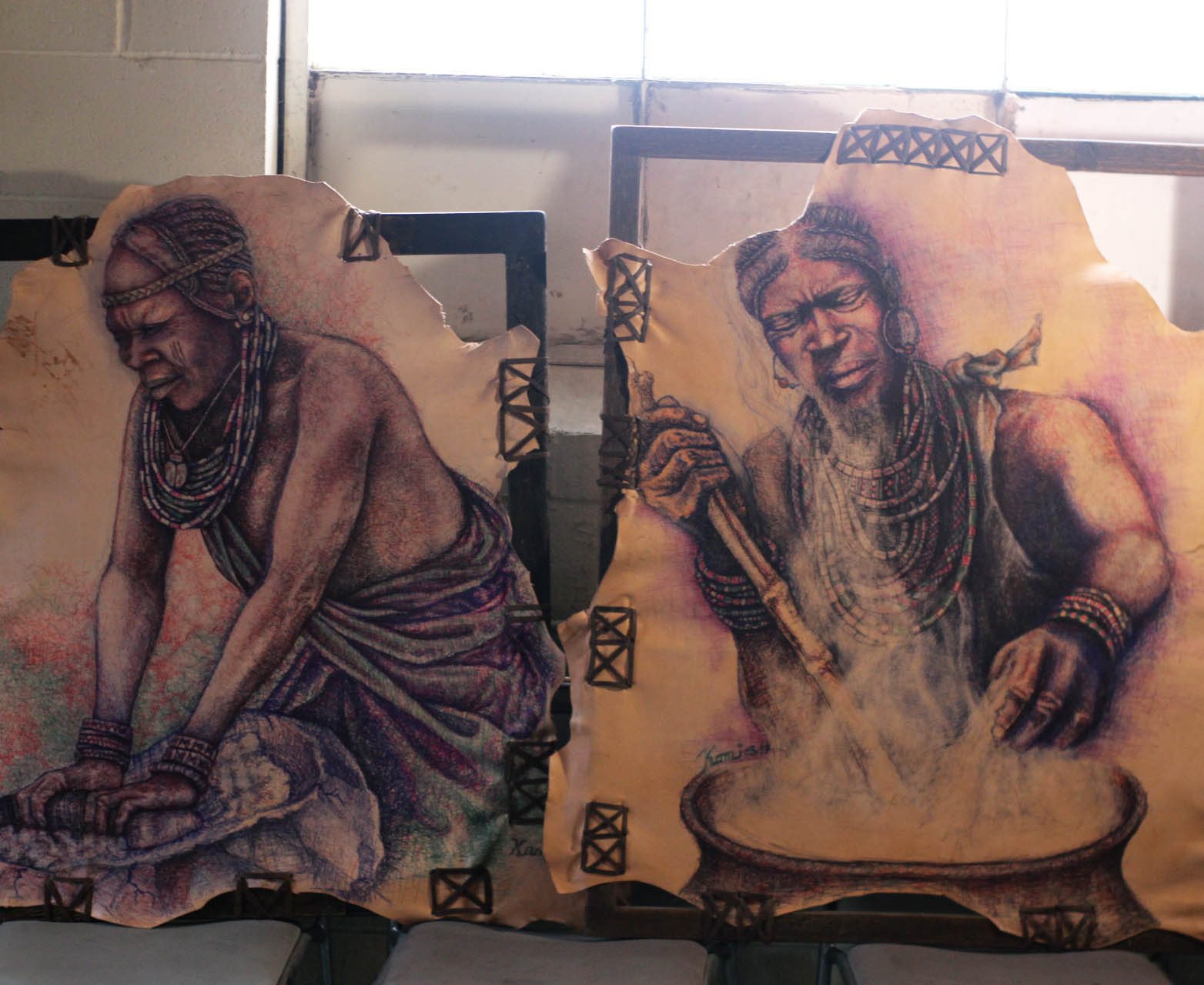
by Danny Burke, Zach Henke, Jessica Levtsenyuk and Bree Samani
Outside the two-story, white building on the corner of 22nd and Y streets, a blue and red sign that reads “Komi Auto Service & Sale” is painted above a door leading into the office where 53-year-old Sudanese refugee Asaad Komi runs his business.
The auto shop Komi opened in 2013 was done so out of passion — not necessarily a passion for cars but a passion for the arts and, more specifically, culture.
“When I moved to America I went to learn about cars, and now I have my own space to do whatever I want to do,” Komi said. “I opened this because, to do art, I need a space of mind and I need a physical space to do this.”
Komi was born and raised in Nuba, Sudan, a village that divides North Sudan from the South. He became interested in art when he was 6 years old.
“We lived in a small village with no electricity, no TV and no toys,” Komi said. “My father entertained us by letting us draw.”
After years of learning he was accepted into the Sudan University of Science and Technology and graduated in 1989 with a Fine Arts degree that emphasized sculpting and drawing. The program only accepted 50 students a year.
In 1999, Sudan was in the midst of a second civil war. During a political uprising in Nuba, Komi decided to leave his home in search of a better life.
“I didn’t have any means, any way or any connections,” he said. “I had 50 dollars in my pocket and a one-way ticket to a foreign country.”
Komi landed in Egypt and headed straight to the United Nations office in Cairo. After a year and a half of paperwork, interviews and waiting for a response, he was granted refugee status and given three choices for a new home: Australia, Canada or the United States.
Komi chose the U.S.
“The U.S. is the most exciting place you’d hear about,” he said.
Assad Komi’s drawings are made on sheepskin leather and stitched to handmade wooden frames. The drawings depict the mother figure from his culture.
Komi spent four years in Charlottesville, Virginia, and then another four in Washington D.C. After a few more years of traveling, he moved to Lincoln, Nebraska, in 2013 to be closer to children who moved to the United States years after he did.
While many artists’ goal is to make a living off their art, Komi wants to develop a clear mission through his work, so owning an auto shop keeps him financially stable while being able to make his art stress-free.
The mission Komi wants to achieve is sharing who he is and where he comes from.
“Culture is telling stories, and art is a global language to sharing culture,” Komi said.
A common theme in some of Komi’s work is the portrayal of mothers from his culture. In Sudan, it’s normal for a mother to oversee everything from cooking to cleaning to teaching the children and making sure all gaps of daily life are filled.
Assad Komi’s sculpture made from clay portrays a woman from his Sudanese culture.
“When you talk about human life, a mother is the center of it,” Komi said. “She’s been trusted to give birth; she’s been trusted to take care of the young; she’s the one that creates culture.”
Komi works with several art mediums, such as clay or plaster for sculpting and pens for drawing. His drawings are made on sheets of sheepskin leather and are tied to handmade wooden frames.
“I’m doing what you’d call a visual culture documentary,” he said.
By that, Komi means the materials and the subjects in his artwork are representative of where he came from.
Komi has shown his work in several Lincoln galleries, including the Midwestern African Museum of Art and plans on showing some of his work at the Husker Lawn and Leisure Show, an event at the Lancaster Event Center that displays a variety of exhibits, in March.
Events like this allow Komi to enlighten strangers from one culture to the world of another, all while building a community in the place he currently calls home.
“Me and you are from a different race, different background, different culture and different way of life, but we are in the one place that we are supposed to find a way to deal with each other: to communicate, to contribute and to build,” he said. “Your city is my city. Your store is my store; your street is my street. The school your kids go to, my kids go.”
To read more of this story and see the complete project, visit https://nebraskamosaic.atavist.com/painting-a-new-picture#chapter-3580937.
*This story is the first part of a multimedia project led by CoJMC students in the Nebraska Mosaic class. To view the complete project, photos and videos, visit https://nebraskamosaic.atavist.com/painting-a-new-picture.